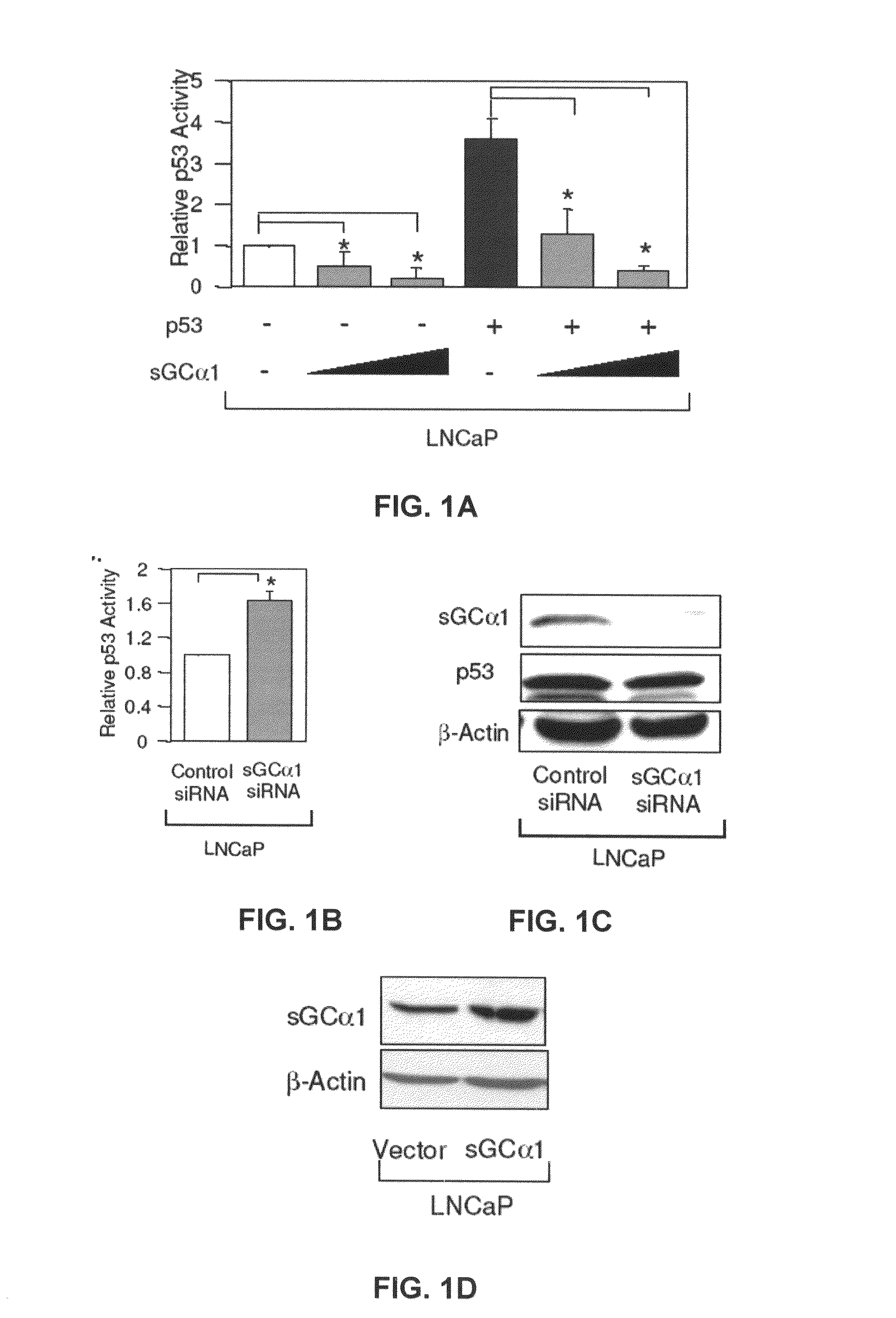sGCalphal inhibiting compositions
a composition and composition technology, applied in the direction of lysine, peptide/protein ingredient, peptide, etc., can solve the problems of hormone-refractory, usually lethal, and ineffective therapy and other current use methods
- Summary
- Abstract
- Description
- Claims
- Application Information
AI Technical Summary
Benefits of technology
Problems solved by technology
Method used
Image
Examples
examples
[0165]The present invention is further defined in the following Examples, in which all parts and percentages are by weight and degrees are Celsius, unless otherwise stated. It should be understood that these Examples, while indicating preferred embodiments of the invention, are given by way of illustration only. From the above discussion and these Examples, one skilled in the art can ascertain the essential characteristics of this invention, and without departing from the spirit and scope thereof, can make various changes and modifications of the invention to adapt it to various usages and conditions. All publications, including patents and non-patent literature, referred to in this specification are expressly incorporated by reference herein.
example i
[0166]First, as shown in FIG. 1A, transient transfection of sGCα1 in LNCaP cells led to a dose-dependent inhibition of p53 transactivation. Diminution of endogenous sGCα1 expression resulted in a small, but reproducible increase in p53 activity (FIG. 1B). Together, these results show that both endogenous and exogenous sGCα1 can inhibit p53 activity. Significantly, this negative effect is not unique to LNCaP cells, as it was also observed in VCaP cells (FIG. 1E) and, importantly, the androgen-independent lines C81, CWR22-Rv1, and Mda-P109 (data not shown).
[0167]FIG. 1C is a graph showing the results where LNCaP cells were transfected with 50 nM control or sGCα1 siRNA and Western blotting was used to detect expression of sGCα1 and p53. β-actin expression was used to standardize Western blot.
[0168]FIG. 1D is a graph showing the results where LNCaP cells were transfected with 0.5 μg empty vector or sGCα1 and Western blotting was used to detect sGCα1 and p53 expression. β-actin expressio...
example ii
[0211]Truncated Sequences and Derivatives
[0212]While Peptide A-8R [SEQ ID NO: 1] has potent anticancer activity, it can be further optimized for selective action on prostate cancer cells and in its overall ‘drug-like’ properties so that it is also suitable for clinical deployment. To accomplish this, Peptide A-8R [SEQ ID NO: 1] was used as a structural template to design additional peptides, peptidomimetics, and small molecule analogs. Initial analogs were screened by in vitro sGCα1 binding assays to generate structure-activity relationships (SAR) in order to better understand the target protein's interaction with A-8R [SEQ ID NO: 1] and the latter's inhibitory properties. Such screening is useful to define the minimal size peptide required for activity while also establishing parameters that can be useful to transition compounds toward incorporated enhanced peptidomimetic character and drug-like properties. In addition, probes displaying a range of activity can be used to validate ...
PUM
| Property | Measurement | Unit |
|---|---|---|
| pharmaceutical composition | aaaaa | aaaaa |
| size | aaaaa | aaaaa |
| width | aaaaa | aaaaa |
Abstract
Description
Claims
Application Information
 Login to View More
Login to View More - R&D
- Intellectual Property
- Life Sciences
- Materials
- Tech Scout
- Unparalleled Data Quality
- Higher Quality Content
- 60% Fewer Hallucinations
Browse by: Latest US Patents, China's latest patents, Technical Efficacy Thesaurus, Application Domain, Technology Topic, Popular Technical Reports.
© 2025 PatSnap. All rights reserved.Legal|Privacy policy|Modern Slavery Act Transparency Statement|Sitemap|About US| Contact US: help@patsnap.com



